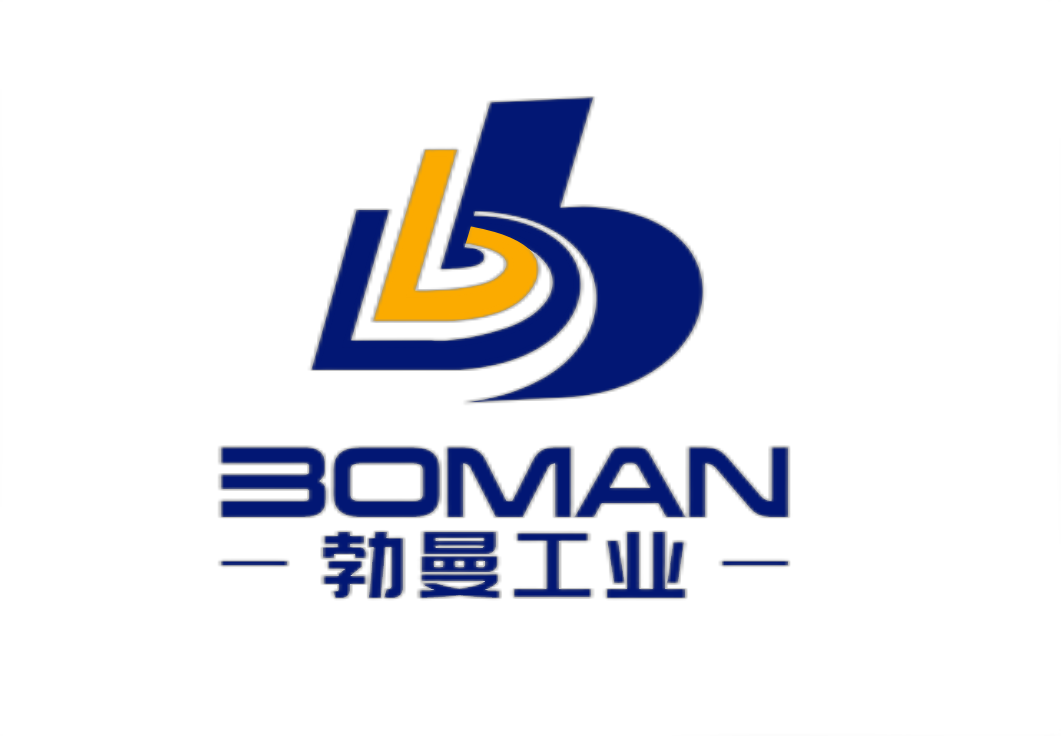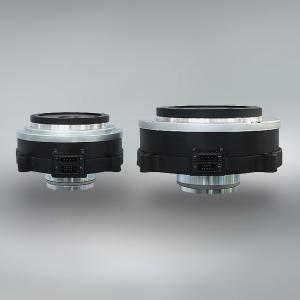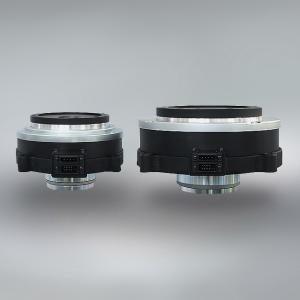-
 Ball Screw Thesis Abstract: Ball screws are mechanical devices that convert rotary motion into linear motion. They are widely used in various applications such as machine tools, robotics, and aerospace. The main advantage of ball screws over other types of screws is their high efficiency and accuracy. This thesis provides an overview of the design, construction, and operation of ball screws. Introduction: Ball screws consist of a threaded shaft, a nut, and a set of balls that roll between the shaft and the nut. When the shaft rotates, the balls move along the thread and transmit the rotational motion to linear motion. Ball screws have several advantages over other types of screws, including high efficiency, low friction, high precision, and long life. They are used in various applications such as CNC machines, robots, and aircraft. Design: The design of ball screws involves several parameters such as lead angle, ball diameter, and ball pitch. The lead angle is the angle between the thread and the axis of the shaft, and it determines the speed and efficiency of the screw. The ball diameter and pitch determine the number of balls required for a given load capacity and the accuracy of the screw. Construction: Ball screws are constructed using high-quality materials such as chrome steel, stainless steel, or ceramic. The shaft and nut are machined to high precision, and the balls are made of hardened steel or ceramic. The balls are held in place by a ball retainer, which prevents them from falling out of the nut. Operation: Ball screws require lubrication to reduce friction and wear. The lubricant used depends on the application and the operating conditions. The operating temperature and load capacity also affect the performance of ball screws. Proper maintenance and inspection are essential to ensure the long life and reliable operation of ball screws. Conclusion: Ball screws are essential components in many mechanical systems. They offer high efficiency, accuracy, and long life, making them ideal for various applications. The design, construction, and operation of ball screws require careful consideration of various parameters to ensure optimal performance. Proper maintenance and inspection are also crucial to ensure reliable operation.
Ball Screw Thesis Abstract: Ball screws are mechanical devices that convert rotary motion into linear motion. They are widely used in various applications such as machine tools, robotics, and aerospace. The main advantage of ball screws over other types of screws is their high efficiency and accuracy. This thesis provides an overview of the design, construction, and operation of ball screws. Introduction: Ball screws consist of a threaded shaft, a nut, and a set of balls that roll between the shaft and the nut. When the shaft rotates, the balls move along the thread and transmit the rotational motion to linear motion. Ball screws have several advantages over other types of screws, including high efficiency, low friction, high precision, and long life. They are used in various applications such as CNC machines, robots, and aircraft. Design: The design of ball screws involves several parameters such as lead angle, ball diameter, and ball pitch. The lead angle is the angle between the thread and the axis of the shaft, and it determines the speed and efficiency of the screw. The ball diameter and pitch determine the number of balls required for a given load capacity and the accuracy of the screw. Construction: Ball screws are constructed using high-quality materials such as chrome steel, stainless steel, or ceramic. The shaft and nut are machined to high precision, and the balls are made of hardened steel or ceramic. The balls are held in place by a ball retainer, which prevents them from falling out of the nut. Operation: Ball screws require lubrication to reduce friction and wear. The lubricant used depends on the application and the operating conditions. The operating temperature and load capacity also affect the performance of ball screws. Proper maintenance and inspection are essential to ensure the long life and reliable operation of ball screws. Conclusion: Ball screws are essential components in many mechanical systems. They offer high efficiency, accuracy, and long life, making them ideal for various applications. The design, construction, and operation of ball screws require careful consideration of various parameters to ensure optimal performance. Proper maintenance and inspection are also crucial to ensure reliable operation. -
 以下是一些常见的河源升降滚珠丝杠型号: 1. SFU1204 2. SFU1605 3. SFU2005 4. SFU2505 5. SFU3205 6. SFU4005 7. SFU5010 8. SFU6310 这些型号的区别在于直径和螺距不同,选择时需要根据具体的应用需求来确定。
以下是一些常见的河源升降滚珠丝杠型号: 1. SFU1204 2. SFU1605 3. SFU2005 4. SFU2505 5. SFU3205 6. SFU4005 7. SFU5010 8. SFU6310 这些型号的区别在于直径和螺距不同,选择时需要根据具体的应用需求来确定。 -
 滚珠丝杠制造全过程包括以下步骤: 1. 材料准备:根据需要制造的滚珠丝杠规格,选择合适的材料,如高强度合金钢等。 2. 材料切割:将材料按照滚珠丝杠的长度要求进行切割。 3. 加工滚珠丝杠头部:将材料的一端进行加工,制成滚珠丝杠头部,包括切割、打孔等操作。 4. 制造螺纹:将材料的另一端进行加工,制成螺纹,包括车削、磨削、滚压等操作。 5. 安装滚珠:将滚珠按照规定的间距和数量安装在滚珠丝杠内,保证滚珠能够顺畅运动。 6. 安装滚珠导轨:将滚珠丝杠安装在滚珠导轨上,以保证滚珠丝杠的运动精度和稳定性。 7. 检验和测试:对制造好的滚珠丝杠进行检验和测试,包括外观检查、尺寸测量、质量检测等,确保其符合规格和质量要求。 8. 包装和出货:将制造好的滚珠丝杠进行包装,标注相关信息,如规格、批次号等,然后出货。 以上是滚珠丝杠制造全过程的主要步骤,不同厂家可能会有所不同。
滚珠丝杠制造全过程包括以下步骤: 1. 材料准备:根据需要制造的滚珠丝杠规格,选择合适的材料,如高强度合金钢等。 2. 材料切割:将材料按照滚珠丝杠的长度要求进行切割。 3. 加工滚珠丝杠头部:将材料的一端进行加工,制成滚珠丝杠头部,包括切割、打孔等操作。 4. 制造螺纹:将材料的另一端进行加工,制成螺纹,包括车削、磨削、滚压等操作。 5. 安装滚珠:将滚珠按照规定的间距和数量安装在滚珠丝杠内,保证滚珠能够顺畅运动。 6. 安装滚珠导轨:将滚珠丝杠安装在滚珠导轨上,以保证滚珠丝杠的运动精度和稳定性。 7. 检验和测试:对制造好的滚珠丝杠进行检验和测试,包括外观检查、尺寸测量、质量检测等,确保其符合规格和质量要求。 8. 包装和出货:将制造好的滚珠丝杠进行包装,标注相关信息,如规格、批次号等,然后出货。 以上是滚珠丝杠制造全过程的主要步骤,不同厂家可能会有所不同。 -
 滚珠丝杠是一种精密传动装置,常用于机床、自动化设备、航空航天等领域。下面介绍滚珠丝杠制造的全过程: 1. 材料准备:滚珠丝杠的主要材料包括丝杠、螺母、滚珠和密封件等。这些材料需要经过选材、质检等步骤,确保符合相关标准和要求。 2. 切削加工:丝杠和螺母是滚珠丝杠的核心部件,需要进行精密的切削加工。常用的加工方法包括车削、铣削、磨削等。 3. 滚珠制造:滚珠是滚珠丝杠的重要传动元件,需要通过冷镦、热镦等工艺制造。在制造过程中,需要对滚珠的尺寸、圆度、硬度等进行严格控制。 4. 组装:在滚珠丝杠的组装过程中,需要将丝杠、螺母、滚珠和密封件等部件按照设计要求进行组合。在组装过程中需要进行各种检测和校验,确保各部件之间的配合精度和传动效率。 5. 检测:滚珠丝杠的质量和可靠性对于应用效果至关重要,因此需要进行各种检测和测试,例如尺寸测量、轴向游隙测量、负载测试等。 6. 包装和出厂:滚珠丝杠制造完成后,需要进行包装和标识,并经过质检合格后才能交付客户使用。 总的来说,滚珠丝杠制造需要经过多道工序,其中每一道工序都需要严格控制,确保最终产品的质量和性能符合设计要求。
滚珠丝杠是一种精密传动装置,常用于机床、自动化设备、航空航天等领域。下面介绍滚珠丝杠制造的全过程: 1. 材料准备:滚珠丝杠的主要材料包括丝杠、螺母、滚珠和密封件等。这些材料需要经过选材、质检等步骤,确保符合相关标准和要求。 2. 切削加工:丝杠和螺母是滚珠丝杠的核心部件,需要进行精密的切削加工。常用的加工方法包括车削、铣削、磨削等。 3. 滚珠制造:滚珠是滚珠丝杠的重要传动元件,需要通过冷镦、热镦等工艺制造。在制造过程中,需要对滚珠的尺寸、圆度、硬度等进行严格控制。 4. 组装:在滚珠丝杠的组装过程中,需要将丝杠、螺母、滚珠和密封件等部件按照设计要求进行组合。在组装过程中需要进行各种检测和校验,确保各部件之间的配合精度和传动效率。 5. 检测:滚珠丝杠的质量和可靠性对于应用效果至关重要,因此需要进行各种检测和测试,例如尺寸测量、轴向游隙测量、负载测试等。 6. 包装和出厂:滚珠丝杠制造完成后,需要进行包装和标识,并经过质检合格后才能交付客户使用。 总的来说,滚珠丝杠制造需要经过多道工序,其中每一道工序都需要严格控制,确保最终产品的质量和性能符合设计要求。
相关产品
扫码添加企业微信

声明
网站免责声明
访问者在接受本网站服务之前,请务必仔细阅读本条款并同意本声明。访问者以任何方式登陆本网站以及通过任何方式直接、间接使用本网站,都将被视作是对本声明全部内容的无异议认可;如有异议,请立即跟本网站协商,并取得本网站的书面同意意见。
1 、访问者在从事与本网站相关的所有行为(包括但不限于访问浏览、利用、转载、宣传介绍)时,必须以善意且谨慎的态度行事;访问者不得故意或者过失损害或者弱化本网站的各类合法权利与利益,不得利用本网站以任何方式直接或者间接从事违反法律、行政法规和违背社会公德的行为,且访问者应当恪守下述承诺:
(1) 传输和利用信息符合国家及地方政府关于互联网网络信息安全的法规、条例、管理办法及其它相关法律法规的规定;符合公序良俗;
(2) 不将本网站以及与之相关的网络服务用作非法用途以及非正当用途;
(3)不干扰和扰乱本网站以及与之相关的网络服务;
(4)遵守与本网站以及与之相关的网络服务的协议、规定、程序和惯例等。
2 、任何单位及个人不得利用本网站来获取商业秘密,窥探个人隐私,侵犯他人知识产权,制造、传播和散布污蔑、诽谤、恐吓他人的言论和消息。一经发现,本网站将立即无限期终止对该用户的任何服务,并报告国家有关公安、行政、司法机关,追究其相关法律责任。
3 、对于因他人的违法或违约行为造成其它招聘单位或个人损害的,由侵权人直接承担法律责任,本网站对此不负任何责任;对招聘单位与求职者之间的一切人事纠纷,由当事双方自行协商解决,与本网站无关。
4 、当本网站以链接形式推荐其他网站内容时,本网站并不对这些网站或资源的可用性负责,且不保证从这些网站获取的任何内容、产品、服务或其他材料的真实性、合法性,对于任何因使用或信赖从此类网站或资源上获取的内容、产品、服务或其他材料而造成(或声称造成)的任何直接或间接损失,本网站均不承担任何责任。
5 、访问者在本网站注册提供的一切用户资料,除政府部门、司法机关等依照法定程序要求本网站披露用户相关资料的或征得用户书面同意外,不会将用户的任何资料以任何方式泄露给任何一方。本网站根据执法单位之要求或为公共安全之目的提供用户资料的,在此情况下之任何披露,本网站均得免责。
6 、任何由于黑客攻击、计算机病毒侵入或发作、因政府管制而造成的暂时性关闭等影响网络正常经营及其他之不可抗力原因而造成的用户资料泄露、丢失、被盗用或被篡改等,本网站均得免责。
7 、 由于用户将用户密码告知他人或与他人共享注册账户,由此导致的任何用户资料泄露、信誉损失等不利影响,本网站不负任何责任。
8 、本声明未涉及的问题参见国家有关法律法规,当本声明与国家法律法规冲突时,以国家法律法规为准。









